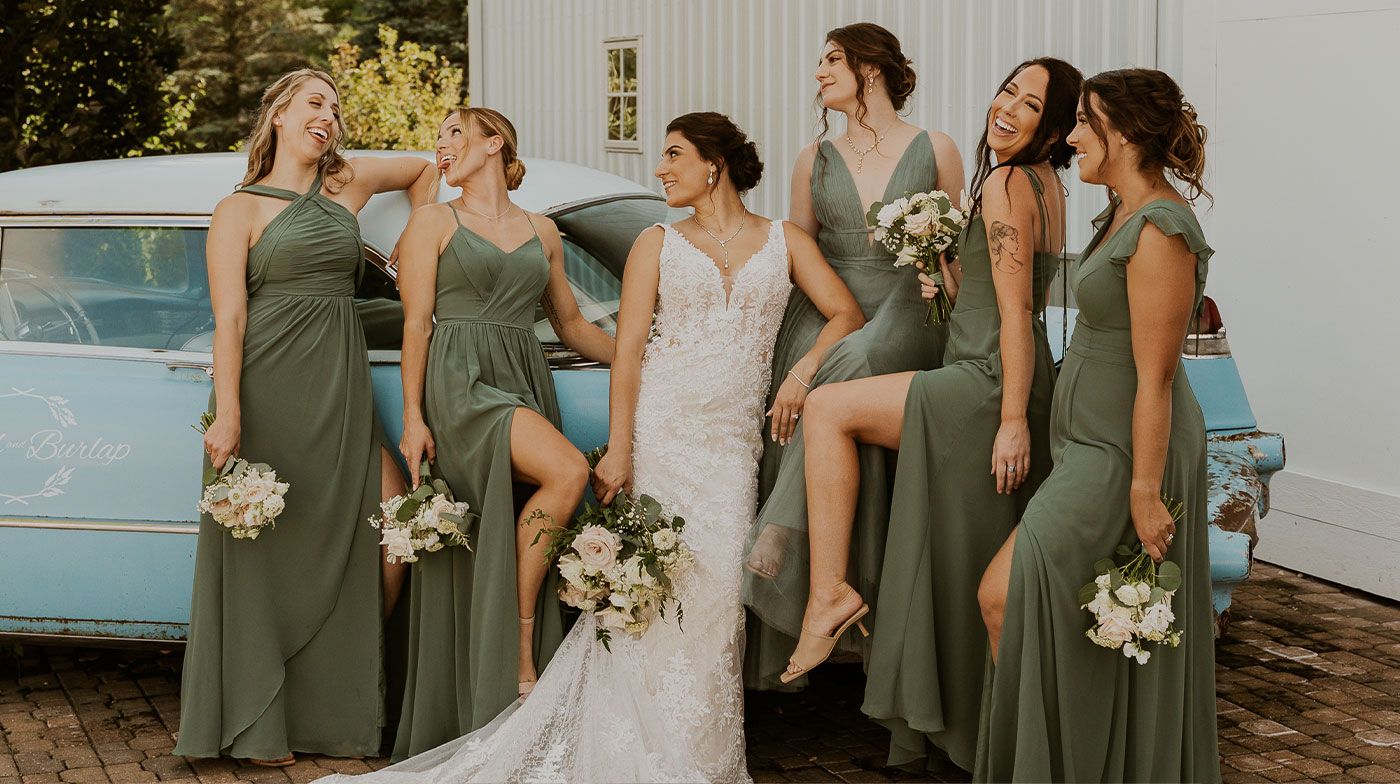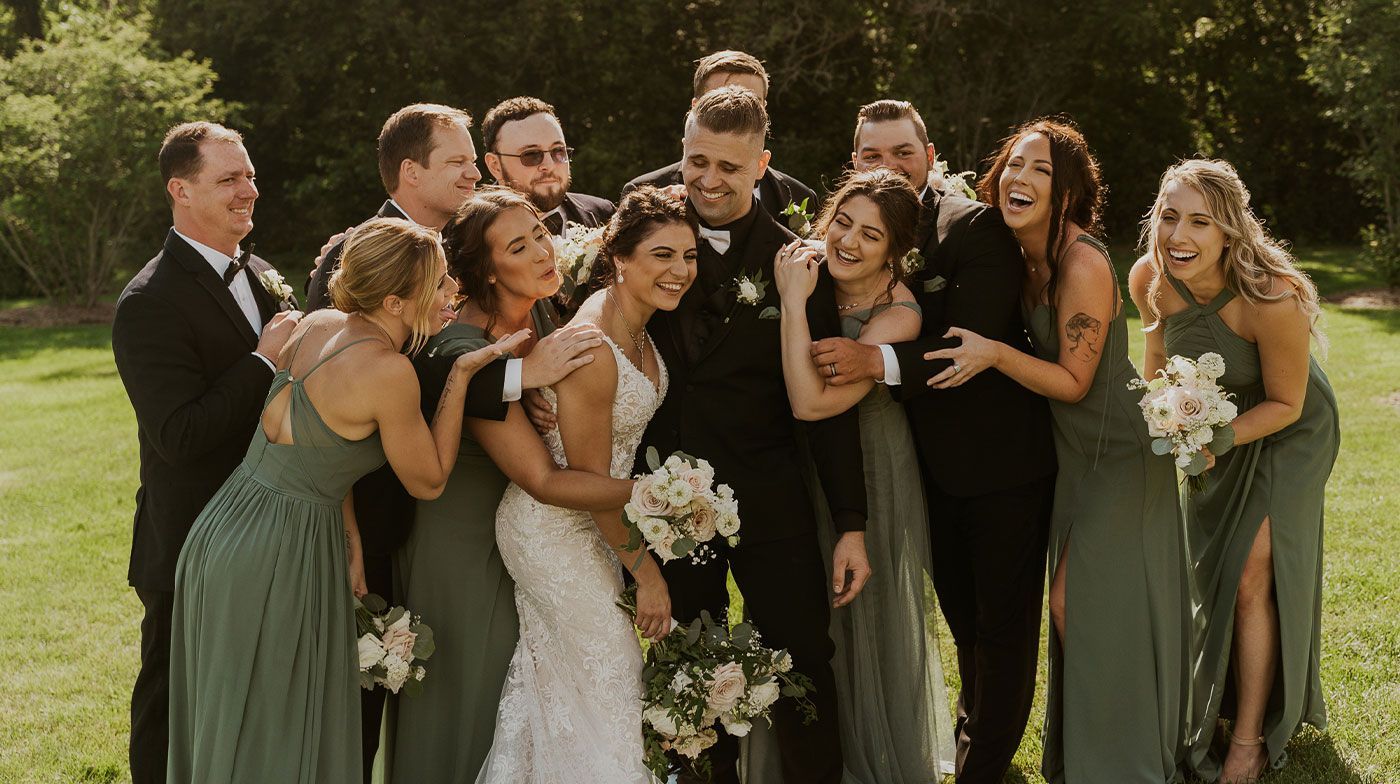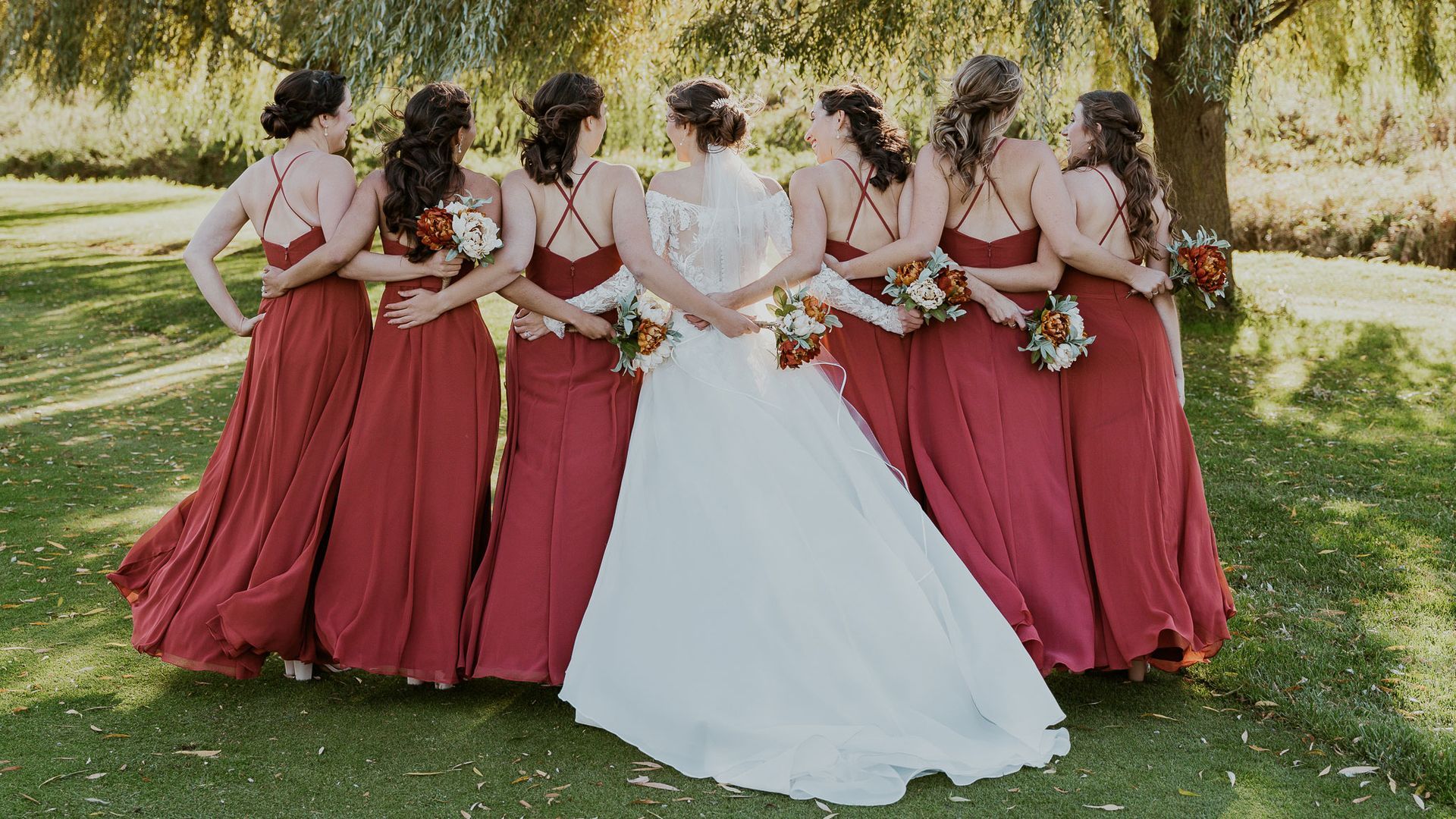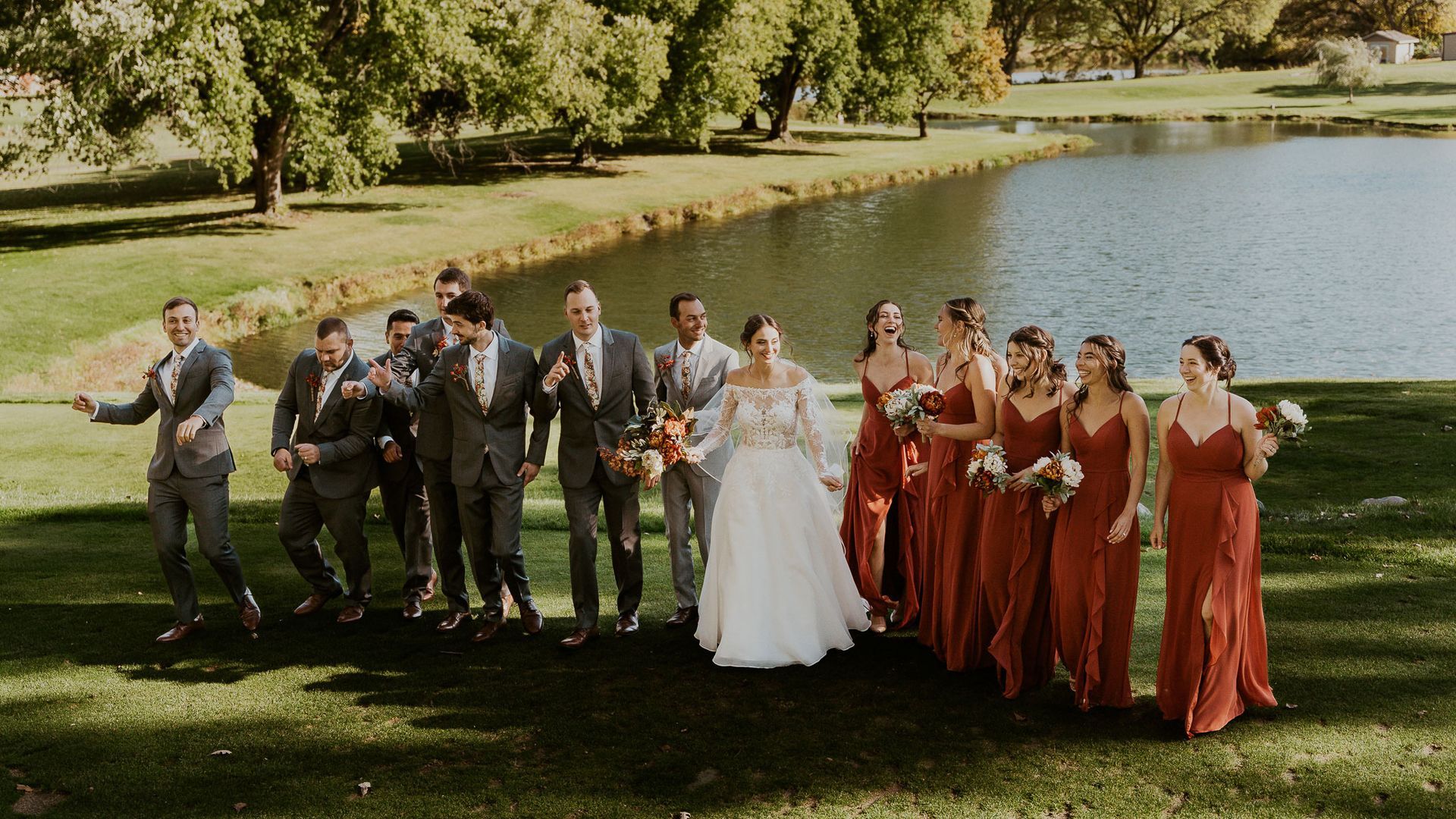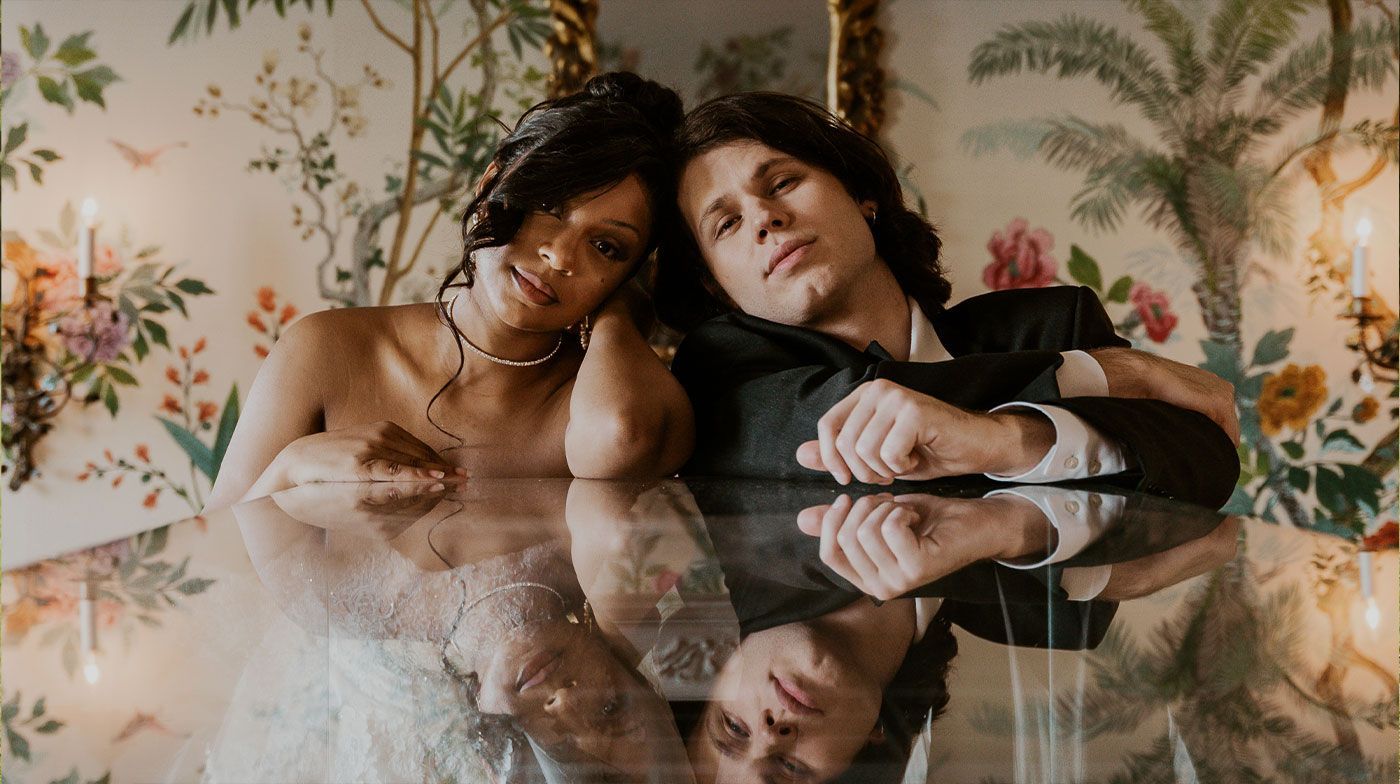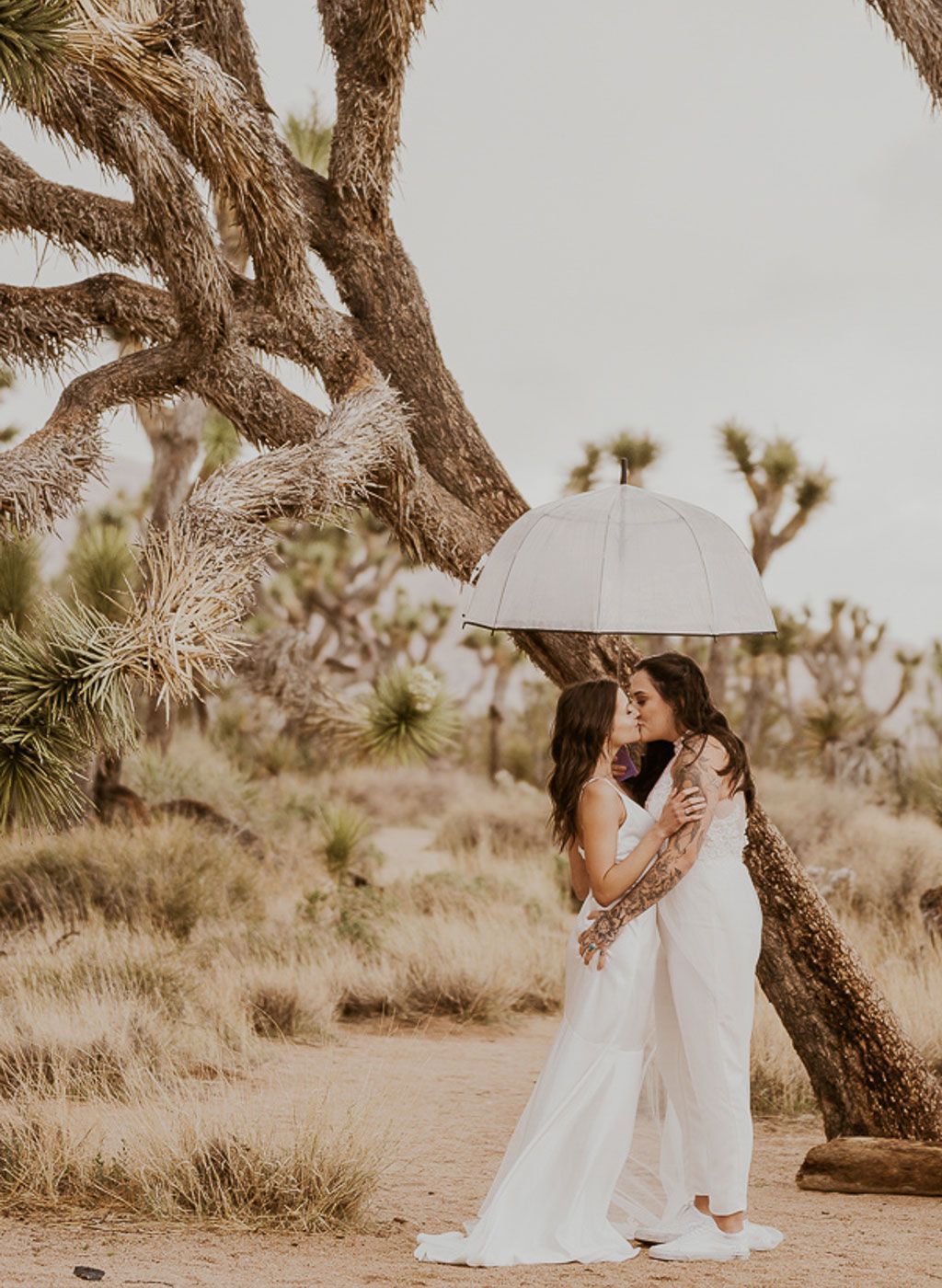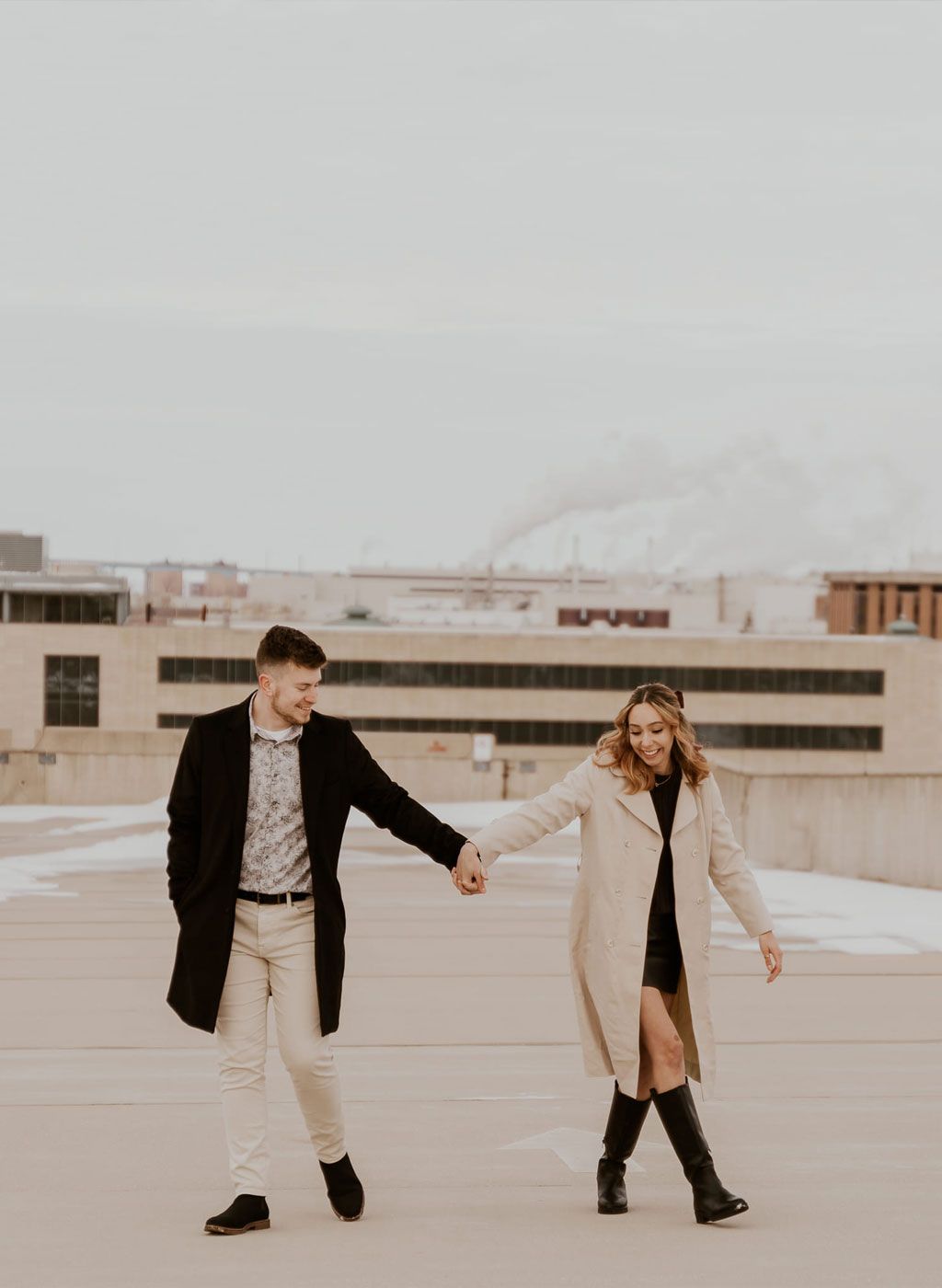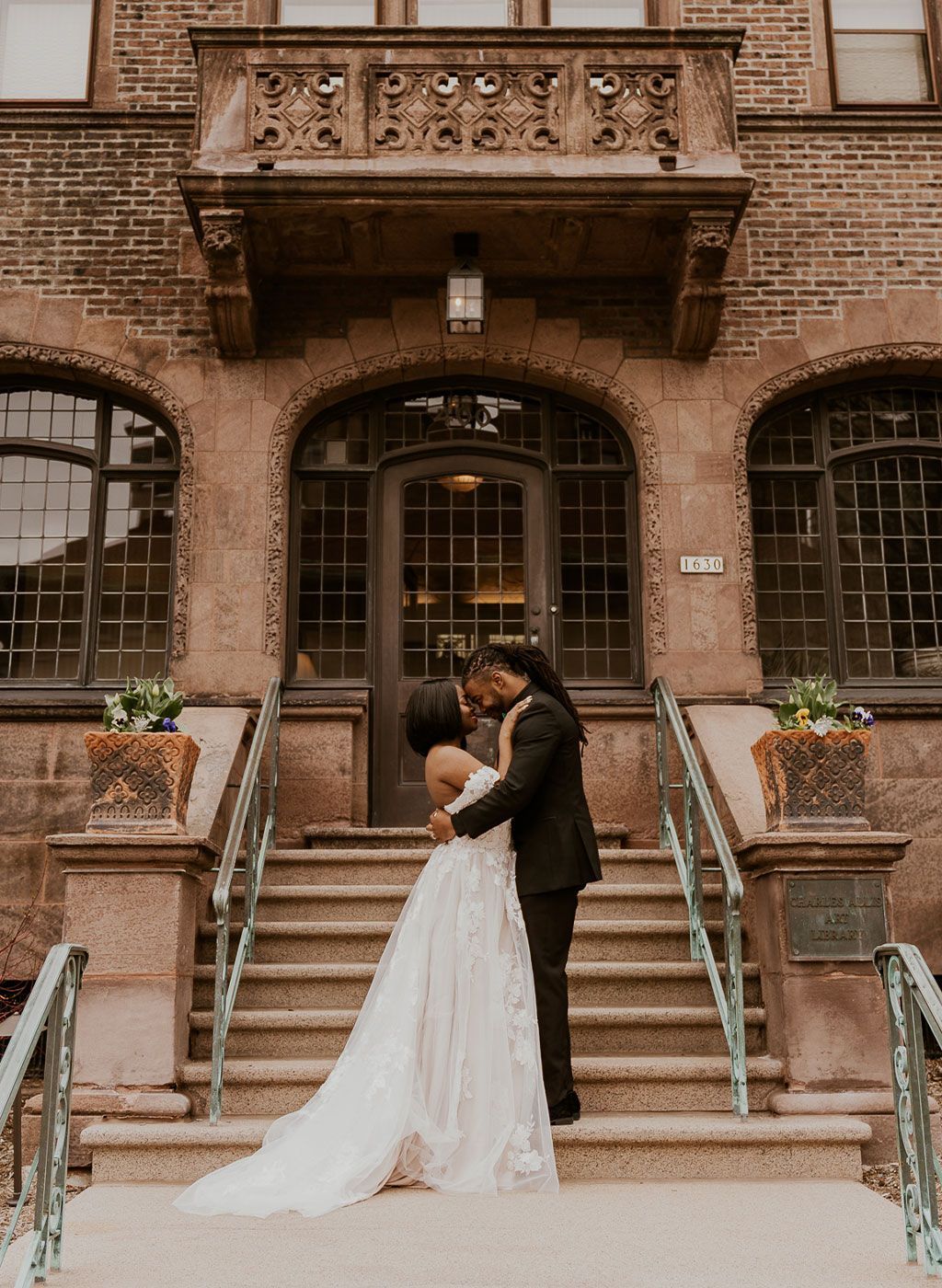Professional Wedding Photography for Larger Weddings: Capture Every Moment
CALL (262) 719-3605
SCHEDULE A CONSULTATIONWeddings are magical moments filled with love, laughter, and unforgettable memories. However, planning a larger wedding can feel overwhelming, especially when it comes to capturing those priceless moments on camera. You might wonder how to ensure every smile, tear, and dance move is perfectly documented amidst the excitement of a bustling crowd. Finding the right professional wedding photographer is key—not just someone who knows how to use a camera, but a seasoned expert who can navigate the intricacies of big gatherings while documenting your unique story in stunning detail. Let's dive into what makes wedding photography special and how you can capture every precious moment from your grand celebration.
When selecting a professional wedding photographer for a larger wedding, it's essential to consider their experience in handling large events, their ability to manage multiple angles and crowds effectively, and the quality of their portfolio showcasing recent large weddings. Additionally, ensure they offer comprehensive packages that cover extensive hours of coverage and include options such as second shooters to capture every moment.
The Art of Professional Wedding Photography
At the heart of professional wedding photography lies an intricate blend of artistic vision, technical expertise, and a keen awareness of the unfolding narrative. With every click of the shutter, photographers are not merely documenting an event; they are capturing fleeting moments that encapsulate emotions and relationships. This task requires more than just technical skill; it demands a creative spirit that can foresee and seize those seemingly insignificant instances that will resonate with couples for years to come.
Balancing Candid and Posed Shots
Striking a balance between candid and posed shots can often define the success of wedding photography. Candid shots—those unplanned moments when laughter erupts or emotions surface—are where the heart of the story lies. Imagine the bride, caught off guard, laughing joyfully as her bouquet is handed to her. Or picture the groom, wiping away tears as he watches his beloved walk down the aisle.
These genuine moments connect viewers with the emotions of that special day like nothing else can. However, posed shots are equally crucial; they ensure every person looks brilliant and capture significant family arrangements or group dynamics. It's important for photographers to communicate with couples beforehand about their vision for both candid and posed images so that expectations align and heartfelt moments can flow alongside beautifully composed portraits.
Storytelling Through Photos
Every wedding unfolds like a captivating story that deserves to be told through photographs. The excitement in the bridal suite during makeup, the sweet anticipation as guests arrive, and the electrifying energy on the dance floor weave an intricate tapestry of experiences. A skilled photographer approaches each wedding with a storyteller's eye, understanding how to capture these threads into a cohesive narrative. By anticipating pivotal moments—like the first look between bride and groom or the heartfelt speeches during dinner—they ensure that each photograph contributes to a compelling storyline.
To truly elevate this storytelling aspect, photographers should consider timing, angles, and light. Positioning oneself strategically allows for unique perspectives on timeless traditions, while playing with natural light can create ethereal effects that add depth to each image captured. Utilizing techniques such as leading lines guides viewers' eyes through photos while evoking feelings tied to specific moments. Success in wedding photography means crafting emotionally engaging keepsakes for couples, allowing them to relive their special day through images. This understanding seamlessly leads us into focusing on the essential elements of preparation and organization necessary for large gatherings.
Planning and Coordination for Large Weddings
Large weddings present a unique backdrop for creating breathtaking memories, but they also demand an organized approach to ensure that every moment is captured seamlessly. The coordination begins long before the wedding day itself, with several key steps to consider that will streamline both the shooting process and create beautiful results.
Step-by-Step Coordination
- Pre-wedding Consultations: During these discussions, take the time to sit down with the couple and explore their vision thoroughly. What moments are most important to them? Who are the critical family members that shouldn't be missed in candid shots? This is where you can gather invaluable insights into how they envision their day unfolding. Listen carefully and make notes because understanding their perspective allows for personalization of the photographic experience. Having a deep understanding of your clients' wishes sets the stage, but next comes another important aspect: getting familiar with the venue.
- Venue scouting: Before the big day, spend time exploring the locations where the ceremony or reception will occur. Each venue will have its own unique characteristics that may influence your photography style, lighting conditions, and angle choices. Determine where natural light flows best during different times of day or pinpoint potential backdrops for portraits. You’ll find that engaging with staff may also yield practical advice on using certain spaces effectively. Now that you've immersed yourself in their preferences and scouted the venues, planning becomes more structured through a clear timeline.
- Establishing a Detailed Timeline: Collaborate closely with the wedding planner to outline specific times for each segment—from getting-ready shots to capturing vows, including breaks for family portraits. A well-structured schedule helps relieve stress for everyone involved while ensuring you stay efficient and focused on capturing every key moment as it unfolds. Proper coordination ensures nothing is overlooked.
Dealing with Multiple Locations
However, even with diligent planning, large weddings often pose challenges associated with multiple locations, such as a ceremony in one space followed by a reception in another venue across town. Efficient time management becomes paramount here; there’s no room for delays if all planned moments are to be captured effectively. This is where creativity meets practicality.
Managing mobility can be tricky: you cannot simply rely on foot travel when you're trying to capture fleeting moments throughout varying locations. To tackle this head-on, employing a second shooter or an assistant can be game-changing. This addition will allow you not only to cover more ground but also to capture simultaneous moments that matter—whether it’s guests mingling at one venue while you’re shooting key moments at another or securing multiple angles during important events like speeches or first dances. In short, having a second pair of eyes can enhance not just your efficiency but also the overall quality of your work.
Investing time in careful planning and coordination brings immense rewards when documenting larger weddings. With every thoughtful step, photographers position themselves to create captivating memories that couples will cherish forever as they navigate through their special day.
Effective Techniques for Capturing Key Moments
Key moments are the heart of wedding photography. Each holds emotional weight, from the bride's radiant smile as she walks down the aisle to the couple's first dance. Employing proper techniques is crucial to capturing these fleeting instances.
- Anticipation and Preparation: Knowing the flow of the ceremony allows photographers to anticipate critical moments like the kiss or the ring exchange. Familiarizing yourself with the event timeline gives you an edge. For instance, understanding when the couple will say their vows can help you decide where to position yourself for optimum angles. Then there's strategy. As you prepare, think about those key visuals you want to capture—expressions on family members' faces and intricacies of decorations. A pre-planned shot list might help, but adaptability is equally important—weddings are known for being unpredictable!
- Continuous Shooting: Utilize the camera’s continuous shooting mode to capture a series of frames during pivotal moments like the bouquet toss or your couple's first kiss. This technique increases the likelihood of getting that one perfect shot amid rapid motion. When your finger presses down on that shutter release, ensure you're capturing a sequence that tells the whole story of that moment. Imagine capturing the spontaneous laughter shared between a couple right after they say "I do." This method proves especially useful during lively events such as cake cutting or dancing when emotions run high and movements are quick. Even slight adjustments in expression can yield stunning differences in your photos. Continuously shooting allows photographers to stay present in the moment rather than fretting over missing something due to a single-button press. Trust your instincts and follow your subjects closely—the more frames you take, the more opportunities you'll have to secure those cherished memories that tell a couple's unique story.
With these techniques in mind, it's essential to equip yourself with the right tools and knowledge about the essentials that enhance your photographic storytelling capabilities.
Equipment and Lighting Essentials
First and foremost, having high-quality equipment is paramount when shooting a larger wedding. The right gear can significantly impact both the clarity of your images and your ability to capture moments as they happen. One of my favorite pieces of advice is to invest in a full-frame DSLR or mirrorless camera, which offers exceptional performance with weightless control over depth of field. This kind of camera allows photographers to adapt to various light settings without compromising quality, making it indispensable for events filled with dynamic moments and shifting atmospheres.
Must-Have Gear for Large Weddings
Beyond the essential camera body and lenses, small accessories can make a world of difference. For instance, an external flash is crucial for large venues, enabling you to combat dimly lit areas without losing the charm of candlelit receptions or sunset ceremonies. Additionally, investing in tripods can provide stability during long exposures, particularly when shooting speeches or dances that require finesse rather than mere snapshots. Each piece of equipment serves a distinct purpose, supporting your overarching goal of storytelling through imagery. However, good equipment alone isn’t enough—the magic often lies in how you manipulate light.
Lighting Setup Tips
Employing off-camera flashes or strobes can drastically enhance your lighting control during key moments. By positioning these devices strategically around your subjects, you can illuminate faces while avoiding harsh shadows that might otherwise detract from the beauty of your images. In contrast, don’t underestimate the power of natural light; during the golden hour—just before sunset—it provides a soft, romantic glow that perfectly accentuates couple portraits. Use reflectors to bounce ambient light onto your subjects' faces, softening any harsh contrasts and enhancing the overall aesthetic of your photos.
Integrating both artificial and natural light allows you to adapt dynamically to various environments without sacrificing image integrity. It's about knowing when to lean on your gear and when to rely on nature's gifts. Mastering both equipment and lighting ensures you’re not just capturing moments; you’re creating art that tells a story—one filled with love, laughter, and lifelong memories.
As we explore further, let’s turn our focus towards effectively capturing group moments and poses, ensuring that every cherished face is framed beautifully.
Selecting the Perfect Photographer for Big Celebrations
Choosing a photographer for a large wedding is an essential step that requires thoughtful consideration. It's not just about the camera and technical skills; it's about finding a partner who can navigate the bustling atmosphere of your big day while still capturing the tender moments that make the occasion unique. Trust in their expertise allows you to focus on enjoying your celebration rather than worrying about logistics behind the lens.
Factors to Consider
- Portfolio: A photographer's portfolio is like their résumé—it's where their creativity shines through. When perusing a candidate’s past work, look for diversity. They should demonstrate exquisite shots of large groups and capture magical, unscripted moments with individuals that speak volumes. This balance ensures that they handle both grand captures and intimate portraits effectively.
- Experience: Plays a vital role in how well a photographer can manage the dynamics of a larger event. Experience matters because larger weddings come with unique challenges—the coordination of families, timing for group shots, and managing emotions require someone who has been there before. Photographers with extensive experience will have honed their ability to read crowds and adapt quickly to changing situations, ensuring those heartfelt scenes are framed perfectly.
- Personality Fit: Your photographer will interact with you and your guests throughout the day, making it crucial that personalities mesh well. A lack of synergy could generate stress during what should be a joyful celebration. Schedule a meeting or consultation to gauge whether their style aligns with your vision, ensuring they're not just proficient behind the camera but also engaging and approachable.
Once you’ve evaluated potential photographers based on these core factors, it becomes easier to refine your options further.
Testimonials and Reviews
One effective way to gauge a photographer’s reputation and skill set is by seeking testimonials from couples who have had similar-sized weddings. Reading reviews or reaching out to previous clients directly provides valuable insights into how well prospective photographers handle larger events. In essence, finding the right photographer involves examining portfolios, understanding experience levels, ensuring personality compatibility, and paying attention to testimonials—each step brings you closer to securing someone who can beautifully encapsulate all aspects of your large wedding celebration.
In this journey of selecting the perfect wedding photographer, remember that the right choice will help turn your special day into an unforgettable story captured through stunning imagery. This careful selection will allow you to cherish those precious moments for years to come.
For the Weddings That Deserve the Spotlight
Your wedding day deserves to be remembered in vivid detail—and Emerie Leigh Photography brings the magic of your Milwaukee celebration to life with a style that’s modern, emotive, and effortlessly timeless. From grand entrances to late-night dance floor moments, every chapter of your love story is captured with intention and artistry. Planning a large wedding? Let’s turn your day into a gallery of unforgettable memories—crafted just for you.



